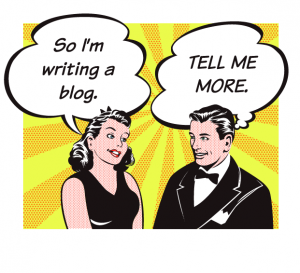Blogging Best Practices II: How To Write For Busy Online Readers
Thanks to the blogging revolution, anyone with an internet connection can now call themselves a writer. Not everyone, though, can be a good writer. And even good writers often struggle to write well online.
Writing effective digital copy for websites and blogs is more challenging than writing for print. Why? Because online readers are busy,  impatient people.
impatient people.
- They skim and scan; they don’t read thoroughly.
- They rarely spend more than a few seconds deciding whether to read on.
- They might be crashing about on a subway train reading what you’ve written on their phone.
- They might be switching between windows on their laptop while working on something else.
- They don’t always speak your language very well.
After years of writing for websites and blogs, I’ve yet to come up with anything revolutionary. These blogging best practices are common sense reminders that will help you make your digital copy clearer, more engaging and more effective. Good luck!
1. Know your purpose
The aim of writing is to get the reader to do something—click a link, book your hotel, call you for more information or just remember your name. Understand what you want the reader to do before you start writing.
2. Know your content
Understand what you want to say. Strike a balance between giving too much information (reader gets bored or sidetracked) and too little (reader misses the point or is unsatisfied).
3. Be clear
The main point should stand out. Say what you mean and only what you mean.
4. Craft a concise headline
The headline should sum up the main message and entice readers to click on it. Keep it short, as only the first few words are usually displayed on a feed. Check out tips on crafting an effective headline here.
5. Use headers
Concise, relevant headers and sub-headers make your article easily scannable, important since most users simply scan rather than read.
6. Use bullet points
Again, to improve clarity and scannability.
7. Inverted pyramid
Start with the most important information and the main message. Few users read past the first paragraph.
8. Grab attention
Use a striking first word and first sentence. Most readers decide within a few words whether they will continue to read.
9. Use short words, sentences and paragraphs
If you use long and unnecessarily convoluted words when short, simple ones will do, your reader will be irritated and stop reading. Two or three sentences is plenty for a paragraph. Big chunks of text are off-putting and make the blog difficult to scan.
10. Use active language
Passive writing is floppy and long-winded.
11. Cut slang and jargon
Vocabulary should be easy to understand by an international audience.
12. Use simple grammar
Murder your darlings. All readers, not just foreign ones, will thank you.
13. Choose relevant, striking images
Include images which reinforce your message, not distract readers.
Want more tips on how to make your blog a success? Check out more best blogging practices from EVG.
If you’re writing for an app or mobile site in particular, also see our tips on writing for mobile sites.
Monica Guy – Director of Content Marketing EMEA



